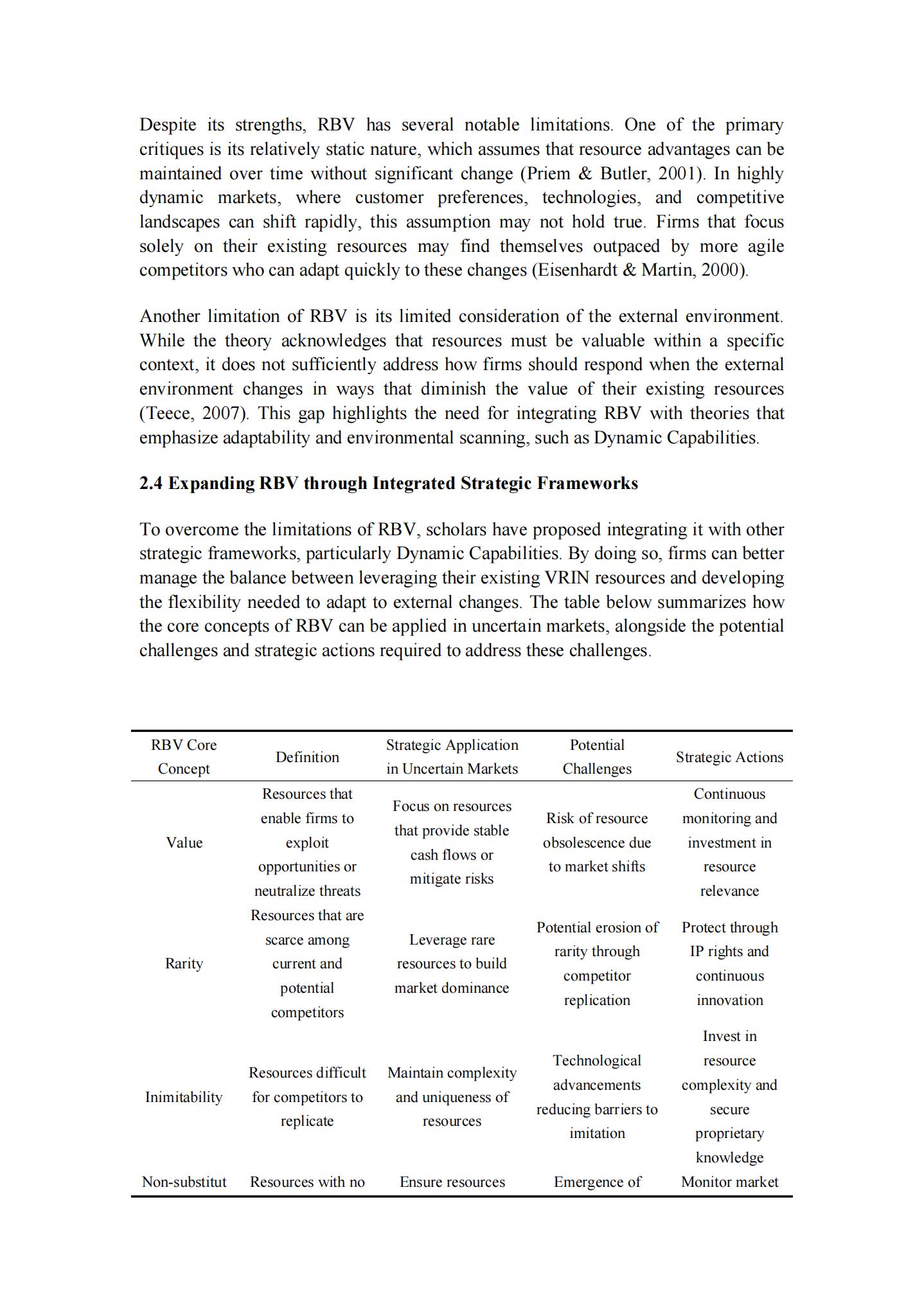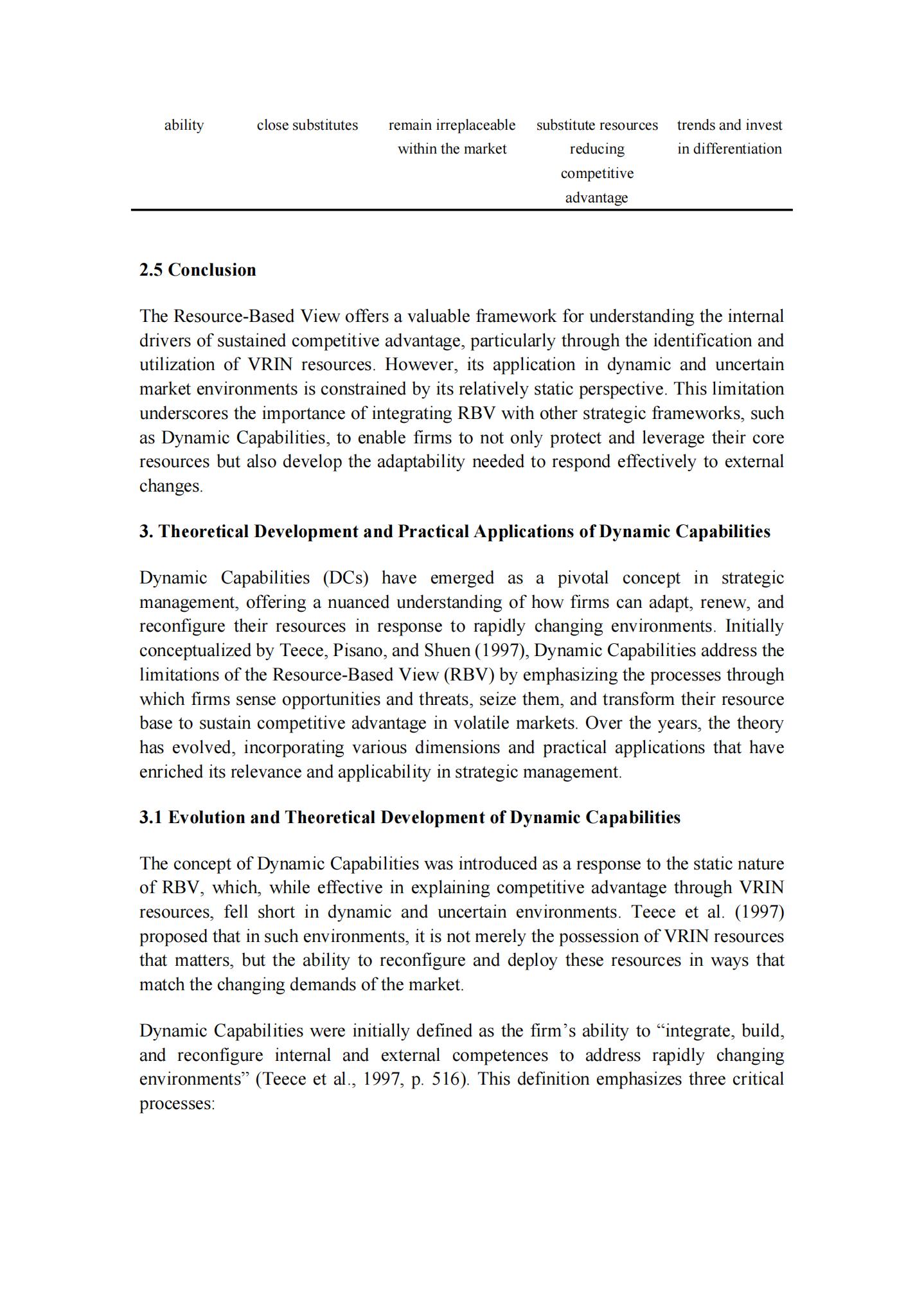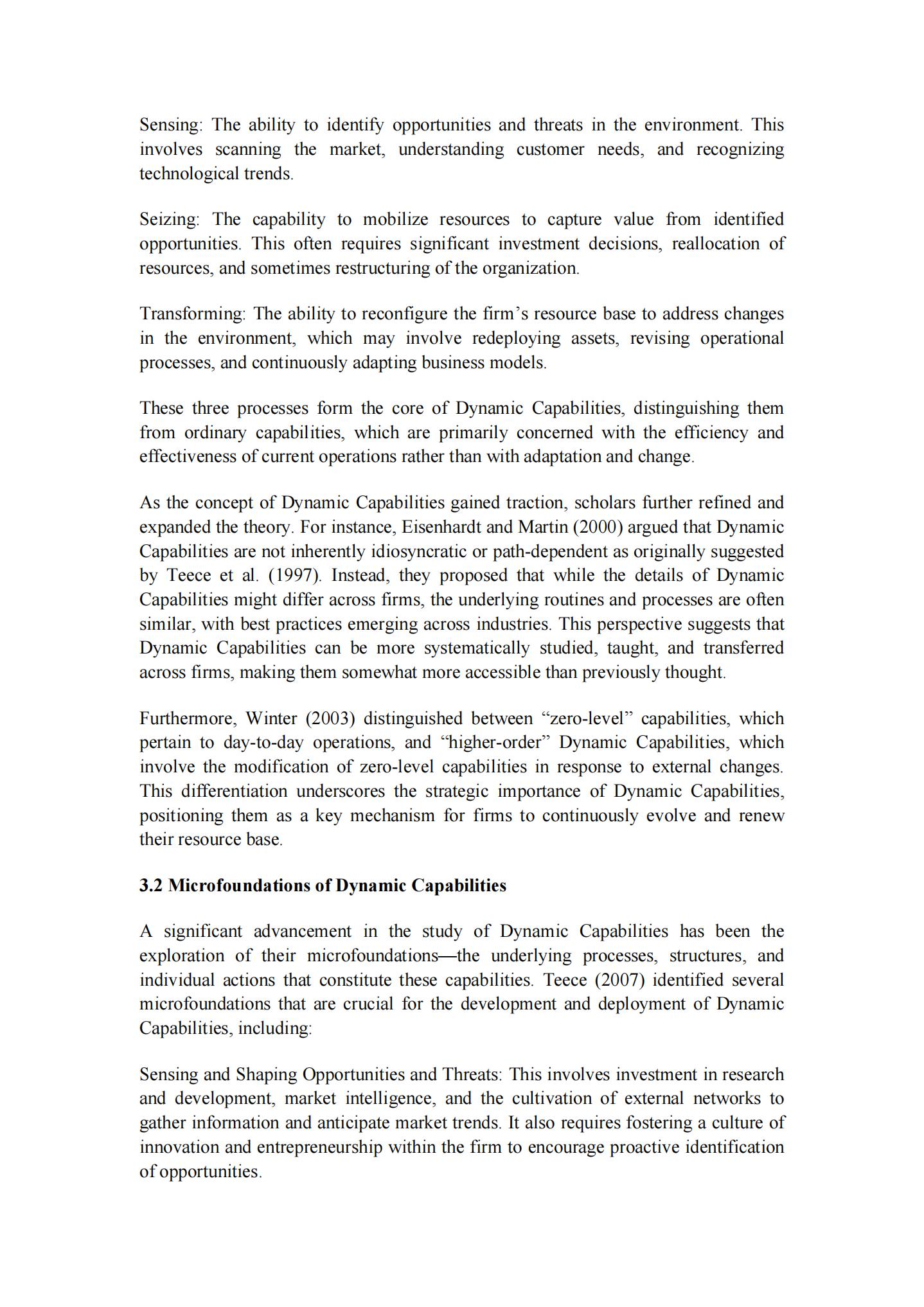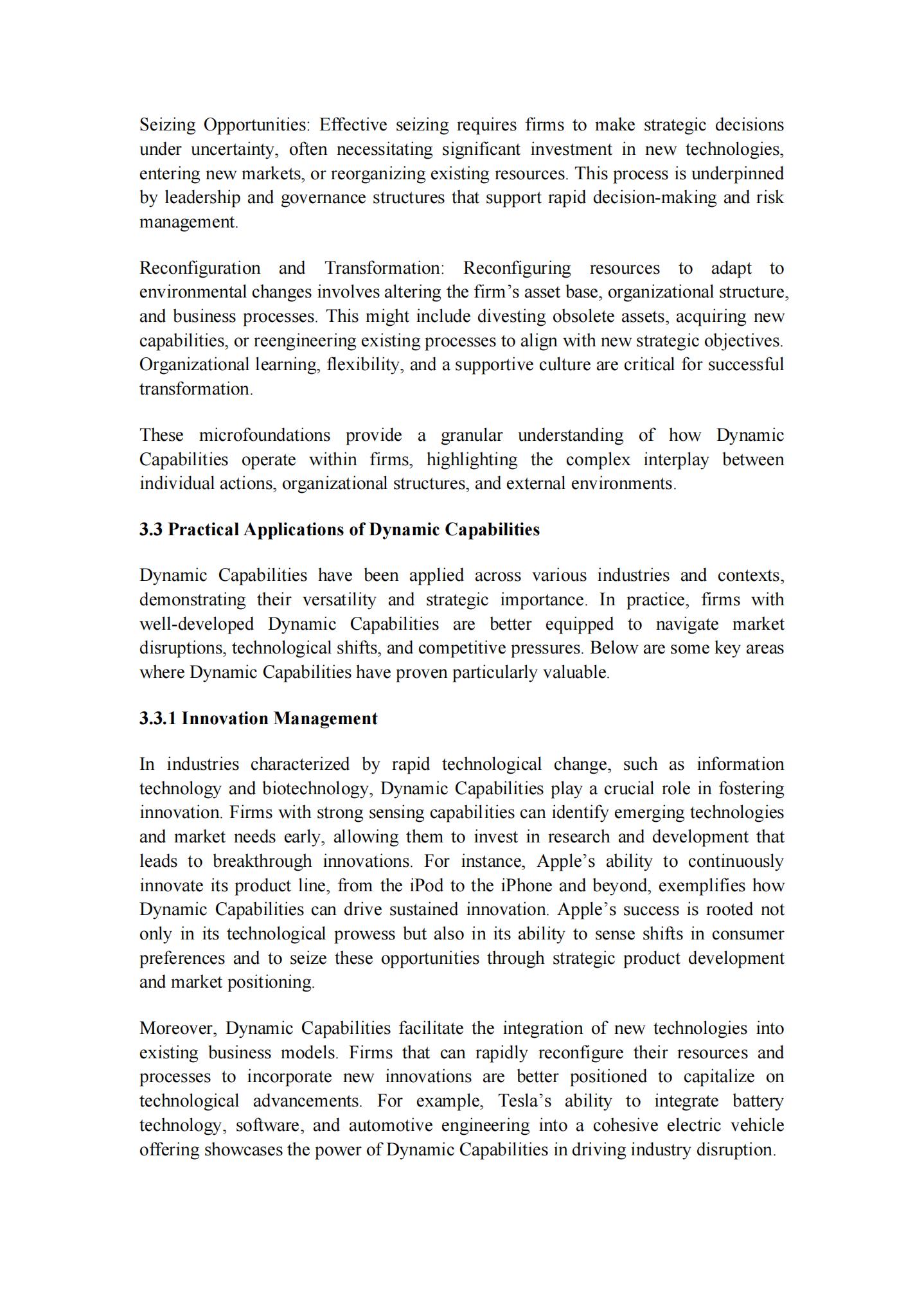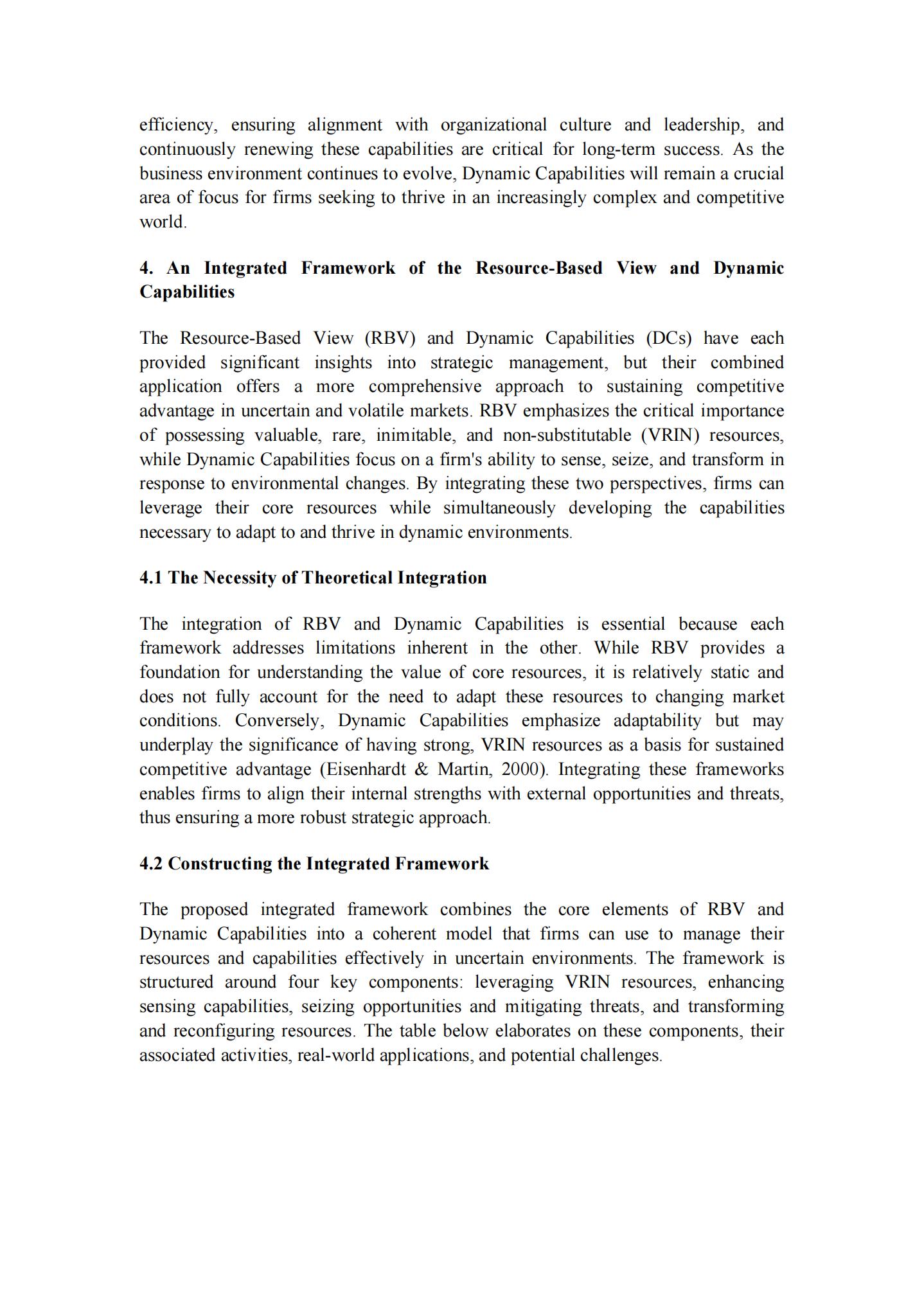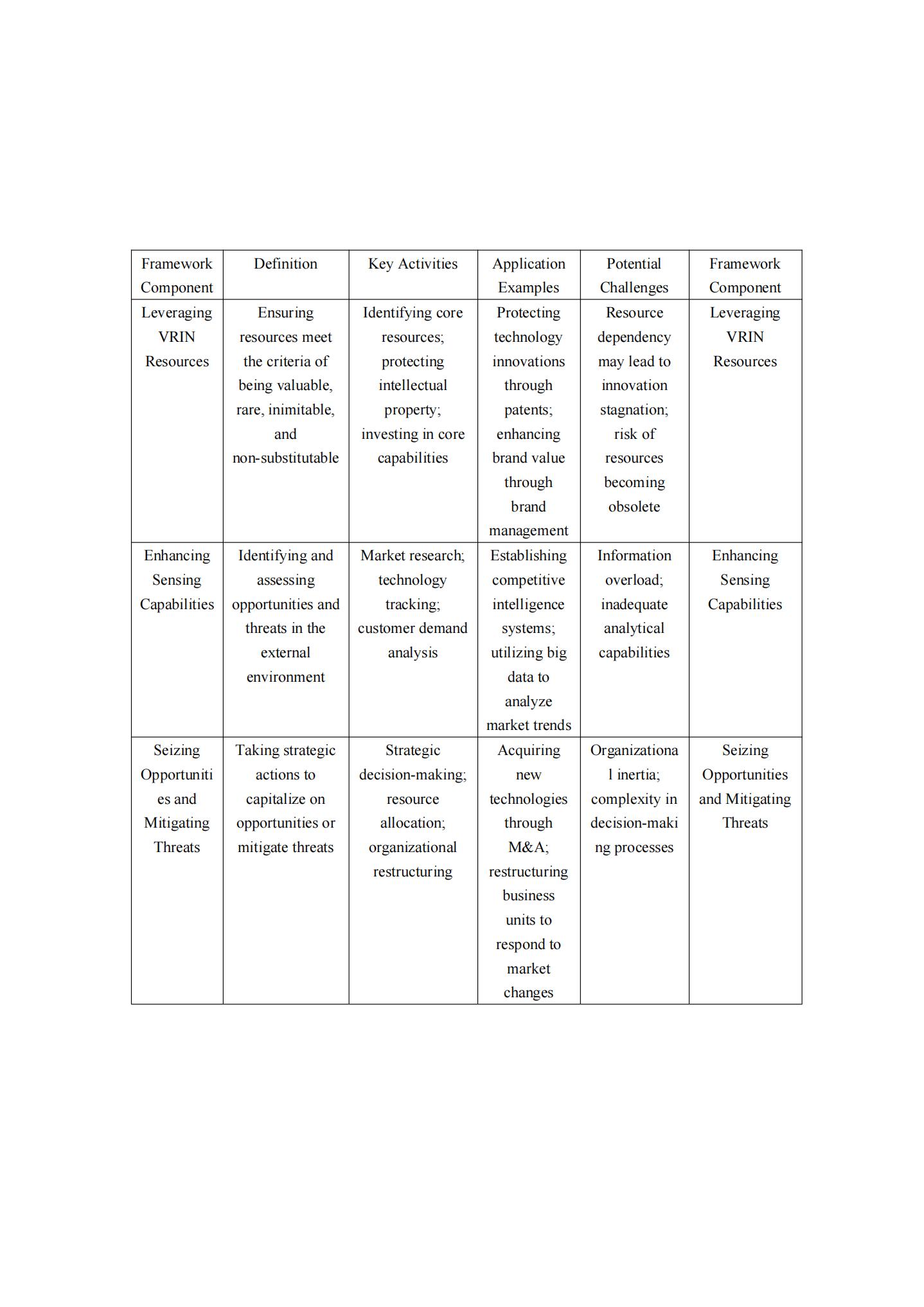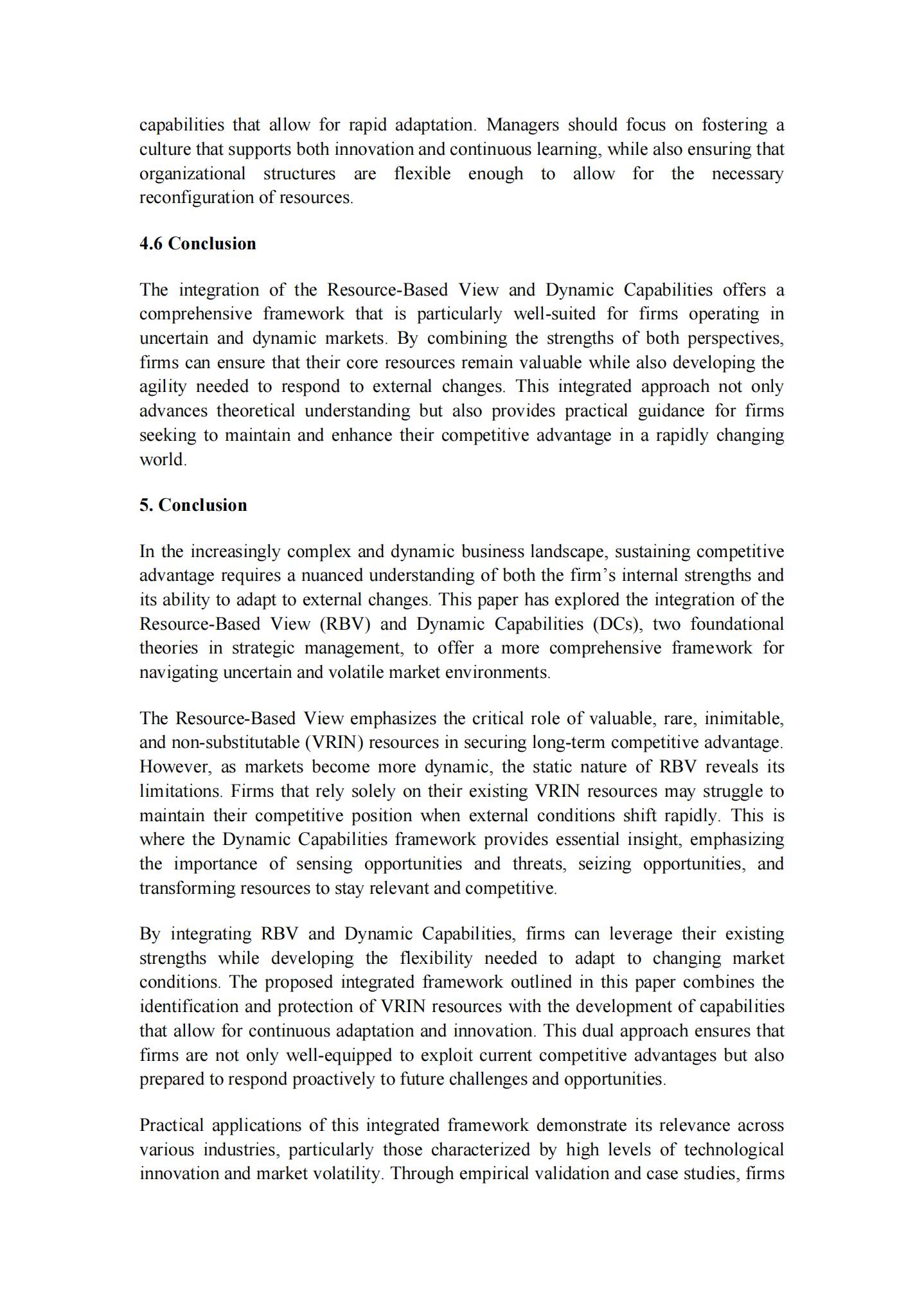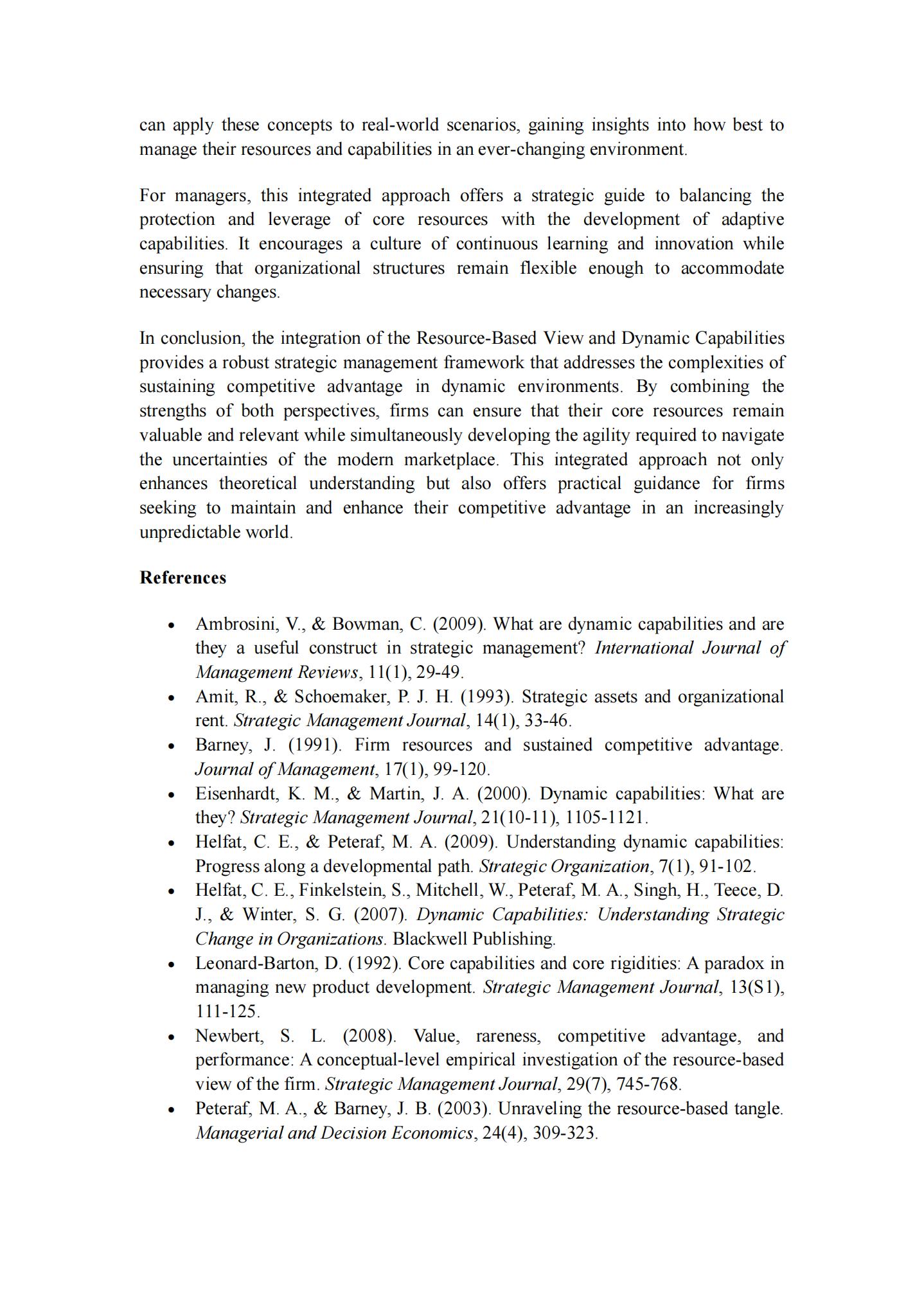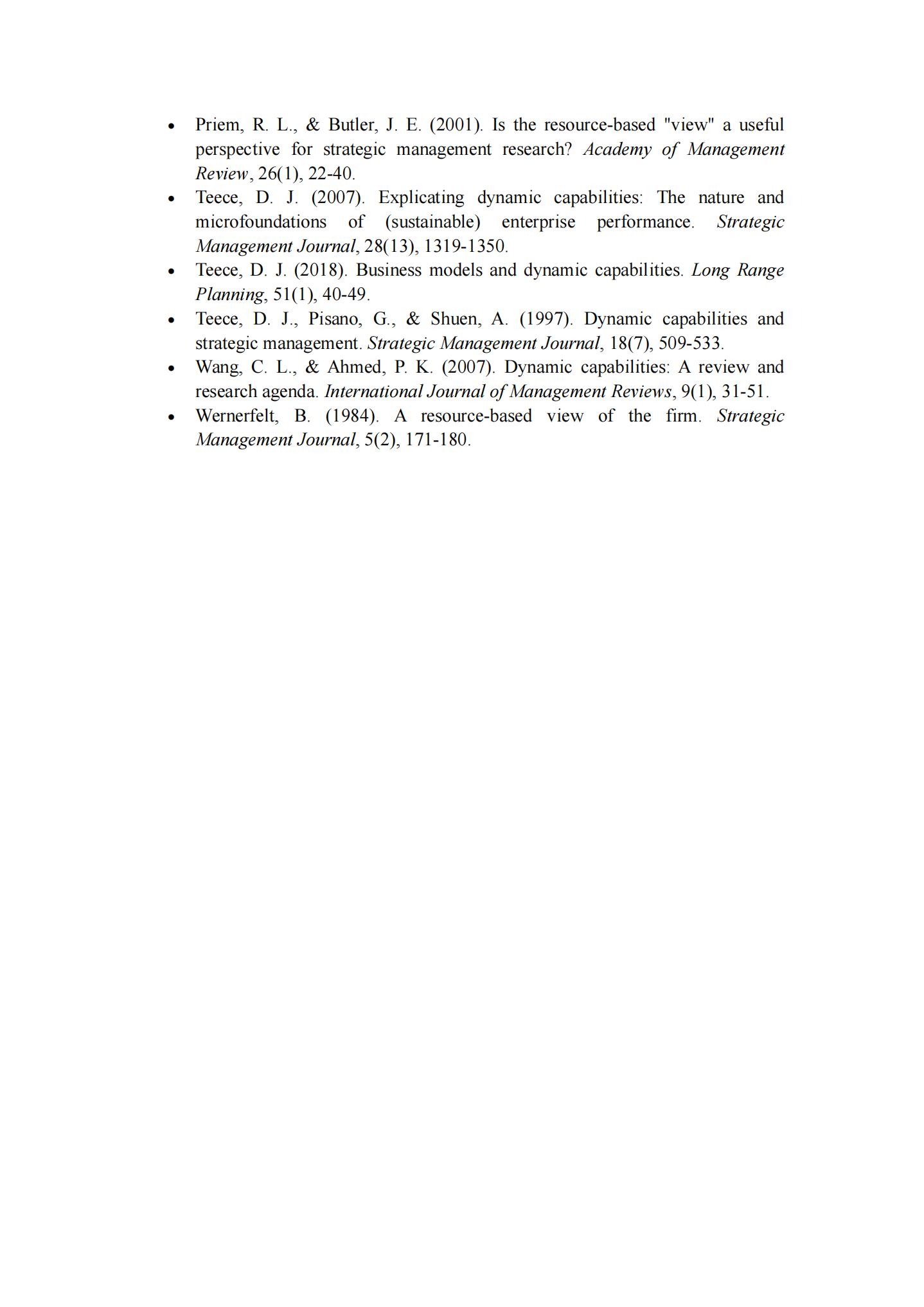最新研究Latest research
|
Integrating the Resource-Based View and Dynamic Capabilities: A Comprehensive Framework for Sustaining Competitive Advantage in Dynamic MarketsWenjie Sun 1*,Kecun Chen 1,Jianhua Mei 1, School ,Seokyeong University, Seoul 02716, South Korea swj411@naver.com AbstractIn today's rapidly evolving business environment, sustaining competitive advantage demands an integrated approach that combines the strengths of both the Resource-Based View (RBV) and Dynamic Capabilities (DCs). RBV emphasizes the importance of valuable, rare, inimitable, and non-substitutable (VRIN) resources as key drivers of long-term success. However, its static nature limits its effectiveness in dynamic markets where adaptability is crucial. Dynamic Capabilities address this gap by focusing on a firm's ability to sense opportunities and threats, seize opportunities, and transform resources in response to external changes. This paper proposes an integrated framework that leverages VRIN resources while enhancing the firm's adaptability through Dynamic Capabilities. The framework offers a strategic guide for firms to balance the protection and exploitation of core resources with the development of capabilities necessary for continuous innovation and flexibility. Empirical applications suggest that this dual approach is particularly effective in industries characterized by high volatility and technological disruption. By integrating RBV and DCs, firms can better navigate uncertainty, ensuring sustained competitive advantage in a rapidly changing marketplace. Keywords: Resource-Based View, Dynamic Capabilities, Competitive Advantage, Strategic Management, VRIN Resources, Adaptability. 1. IntroductionIn today’s rapidly evolving and highly competitive business environment, firms are increasingly challenged by market volatility, technological advancements, and shifting consumer preferences. The ability to sustain competitive advantage has become more complex and dynamic, necessitating a deeper understanding of the internal and external factors that contribute to long-term success. Two prominent theoretical frameworks that have been instrumental in explaining how firms achieve and sustain competitive advantage are the Resource-Based View (RBV) and Dynamic Capabilities (DCs).
|



